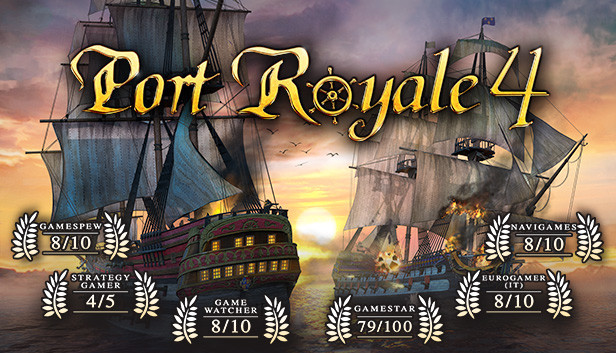Wonder how to properly use warehouses? Frustrated that you can’t sell and unload into the warehouse at the same time, or visa versa? Well then this is the guide for you, to walk you through how to utilize your warehouses. This doesn’t go into deep discussions about utilization and maximizing trade routes and warehouses, but rather to do what the game doesn’t and show you how to actually use warehouses
First thing’s first
Warehouses, and how they integrate into the economy and your trade routes, are not well explained in the tutorials or tips & tricks guide. I’ve been researching and testing how they work, why they work the way they do, and what all the buttons do and fields mean. I am by no means an expert, but I feel I know enough to help the next person not get as frustrated as I was when I started. When you’re finished with this guide, check out the Economy Guide (Google Doc[docs.google.com], Steam) as well
To Begin
There are two modes for warehouses in Port Royale 4: Optional and Mandatory
- Optional means you can build businesses without building a warehouse. Businesses will sell their commodities to the town. When you do build a warehouse, you will not need an to hire an administrator to trade commodities with the town
- Mandatory means you must build a warehouse before you can construct anything in the town, even town infrastructure.
- Regardless of the mode you choose, in order to trade with the town through your warehouse you must hire an Administrator on the Trade tab.
There are 3 warehouses:
- T1 (Small Warehouse) holds 5,000 items and costs 250 gold/day. The Administrator costs an additional 250 gold/day
- T2 (Warehouse) holds 10,000 items and costs 500 gold/day. The Administrator costs an additional 500 gold/day
- T3 (Large Warehouse) holds 20,000 items and costs 1,000 gold/day. The Administrator costs an additional 1,000 gold/day
*These costs will be higher on higher economy difficulty settings
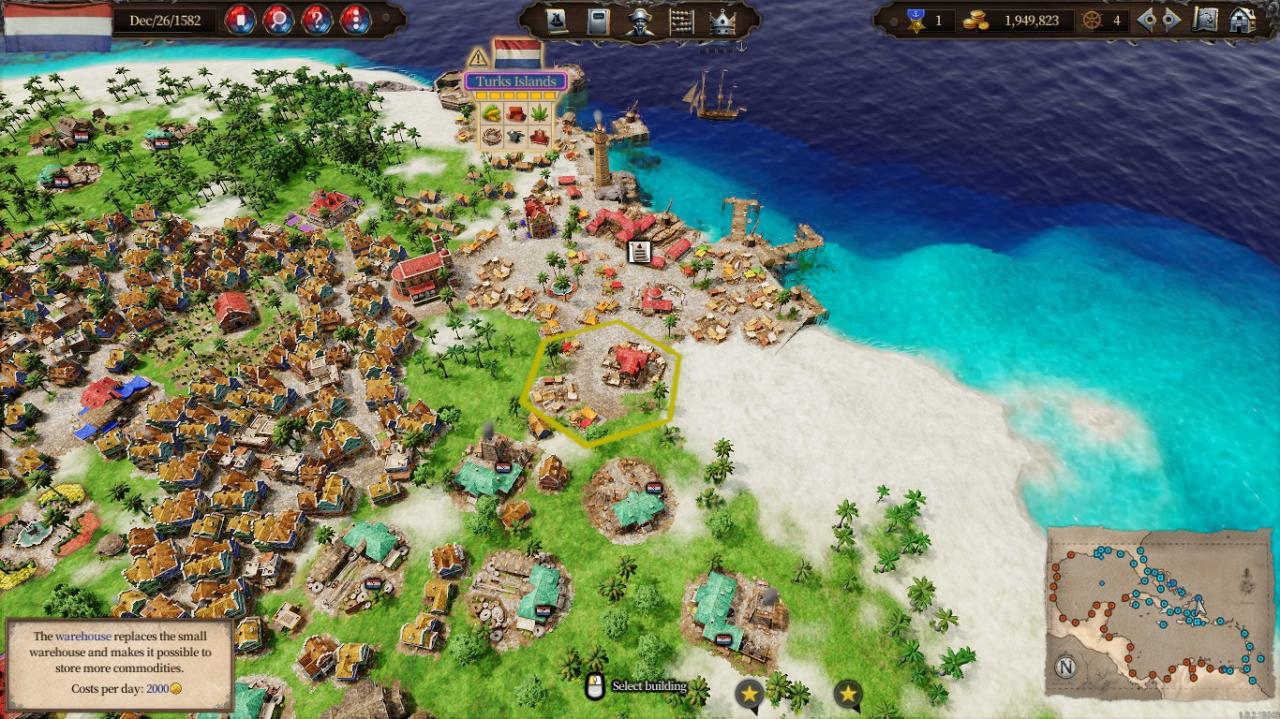
Did you know you can click on the warehouse in your town to manage it? If you didn’t, it’s ok. I looked for something like this in all the trade menus and couldn’t find it. Only after reading a reddit post did I have my mind blown. If you’ve played previous Port Royale games, you probably already knew. I had no clue, so click on your warehouse
In case you skipped the tutorial: Only your businesses will send commodities to your warehouse. If you don’t have any businesses then your warehouse is basically useless. You can use it to unload commodities from your trade routes, but that’s outside the scope of this section
A Whole New World
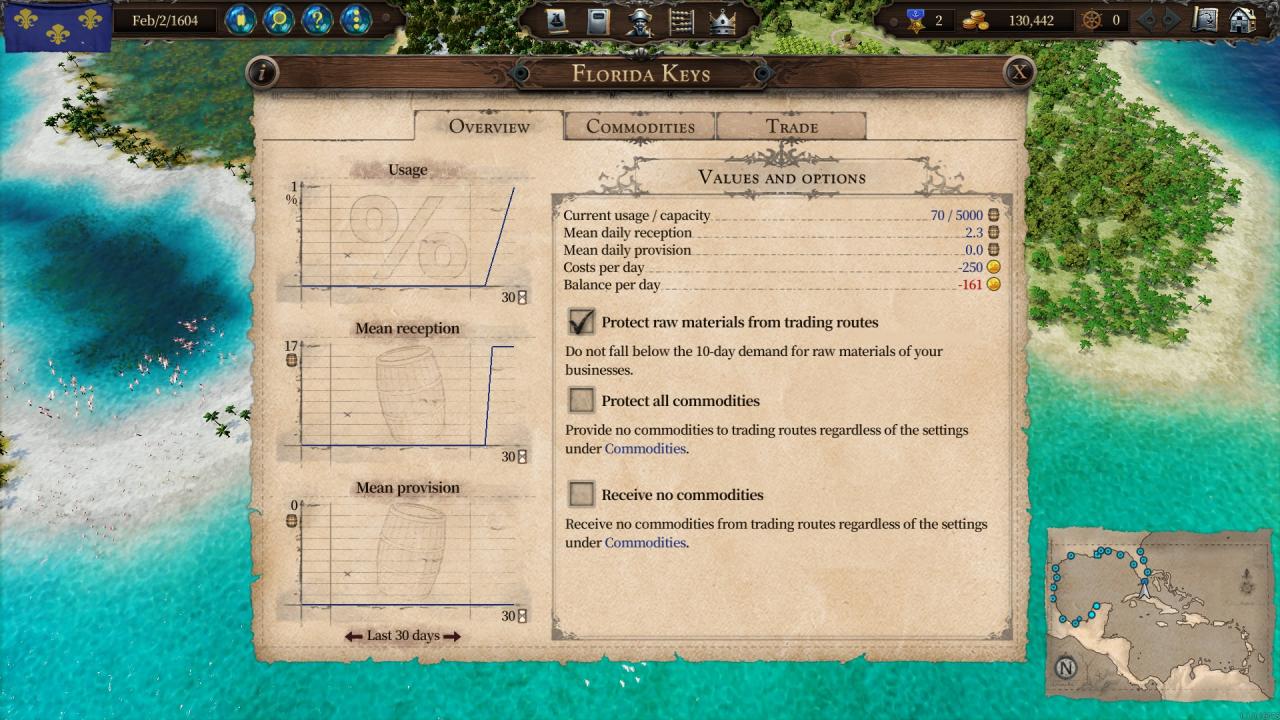
The overview tab before hiring an administrator
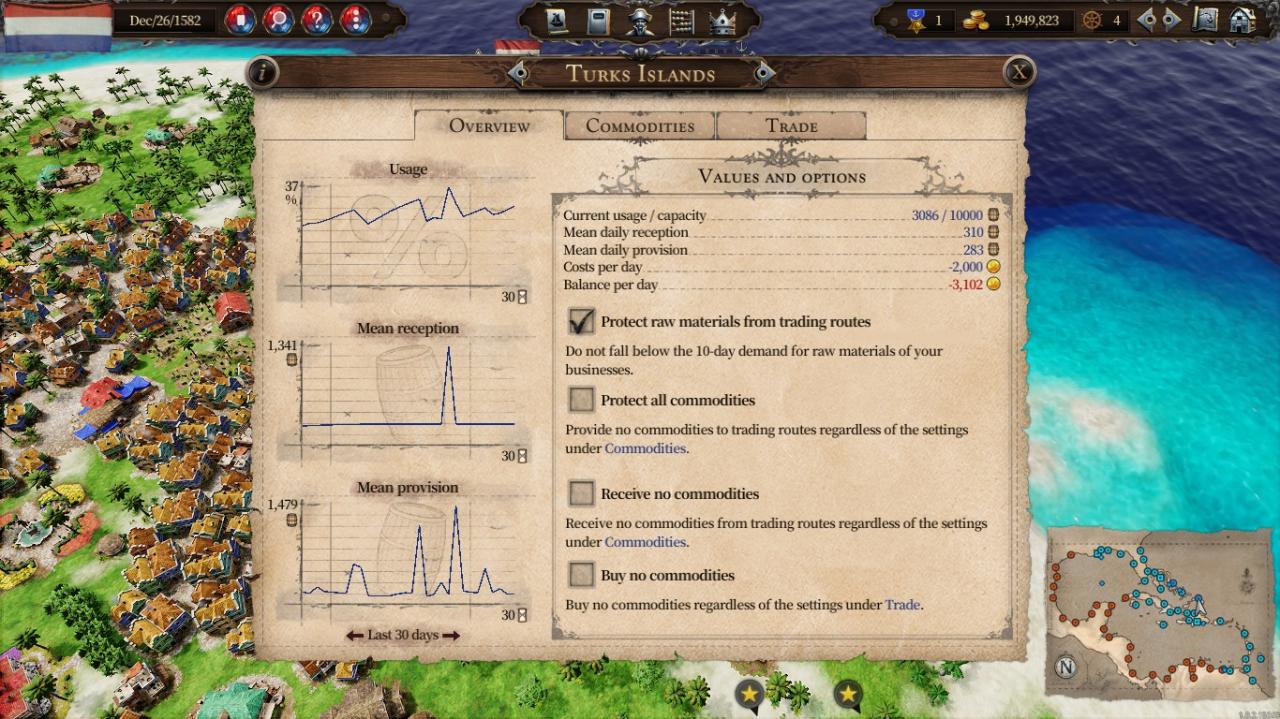
The overview tab after hiring an administrator
Now that we know how to get to the warehouse management, we get our first tab with a bunch of information in it to unpack.
The Graphs
On the left side of this tab we have 3 graphs that are somewhat insightful. The top graph is the % of space used in your warehouse over the last 30 days. It’s good for an indication of when you need to upgrade your warehouse to the next level. I have the T2 warehouse in Turks Islands right now, which it looks like I really don’t need since my highest usage over the last 30 days was 37%. A T1 would be perfectly fine here
The second graph, Mean Reception, is how many items were dropped off in your warehouse by ships on your trade routes and items deposited by your businesses over the last 30 days. We see I have a fairly steady reception rate from my hemp and rope businesses, and then one giant spike of 1,341 items in one day. This is most likely one of my longer routes that I tell to dump everything at the end so the smaller routes can load up and sell locally, since I’m playing this game with regional resources enabled.
The third graph, “Mean Provision” shows how many items were picked up from your warehouse by convoys on your trade routes, or sent to your businesses over the last 30 days. You can see I’m producing quite a bit in Turks Islands, hemp and rope mainly, so I have 2 big spikes that correlate with production and the big item dump from the second graph. These graphs are good to get a quick bead on what’s going on.
Values and Options Panel
This is more info averaged out for you. At a glance, we have Current usage and capacity (3086 / 10000)
Mean Daily Reception and Provision is just the graphs, but in daily form. So averaged out I’m bringing in 310 barrels from my convoys, and they’re picking up 283 barrels from my production
Costs per day is just the warehouse base cost plus the administrator, if you have one. Balance per day takes into account the sale of items to the town minus the cost of holding the items there. (Note: The second screenshot was taken before the 1.1 update which reduced the daily cost of warehouses)
The next 4 options are regarding commodities in this warehouse, and they overrule anything else set up in the next 2 tabs. The only one I ever use is the first option, “Protect raw materials from trading routes”. It does what it says: It keeps at least 10 days worth of raw materials in your warehouse for businesses that refine them. In Turks Islands I make boatloads of rope (79 per day), so this would keep 790 hemp in my warehouse protected from my trade routes taking it.
Commodities tab
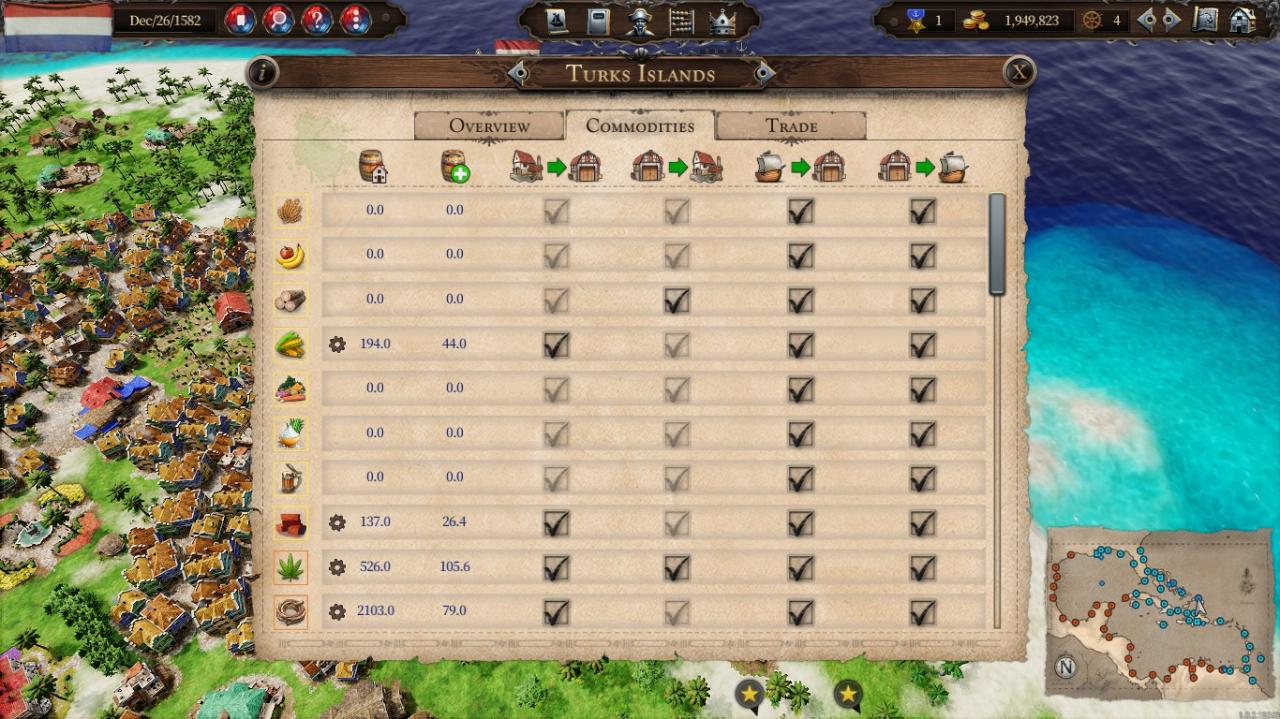
This heading is pretty straightforward. You have all of the commodities down the left side, and the columns left to right are thus: Stock in your warehouse, Daily Production, Allow your businesses to put items in the warehouse, allow your warehouse to give materials to your businesses for production, allow your trade routes to drop off this commodity into your warehouse, and allow trade routes to take this commodity from your warehouse.
Anything with a gear symbol next to it is something you are currently producing in the town
Trade tab
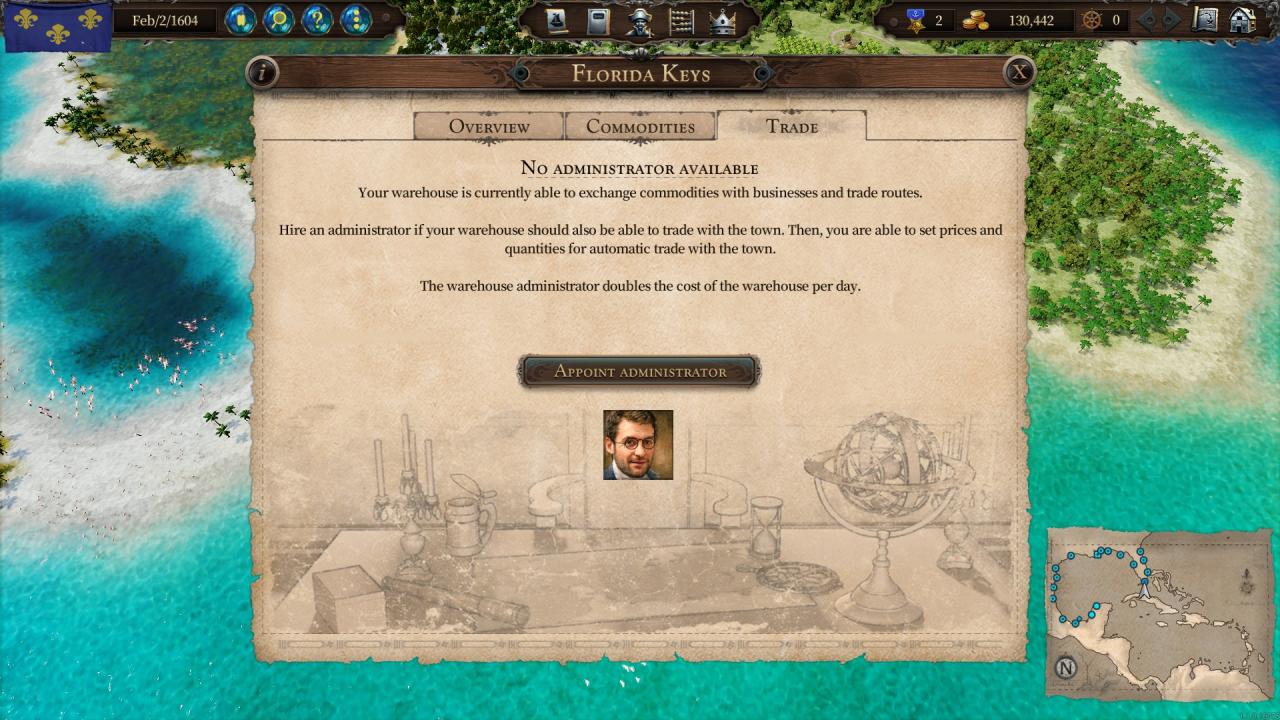
The Trade tab before you hire an Administrator
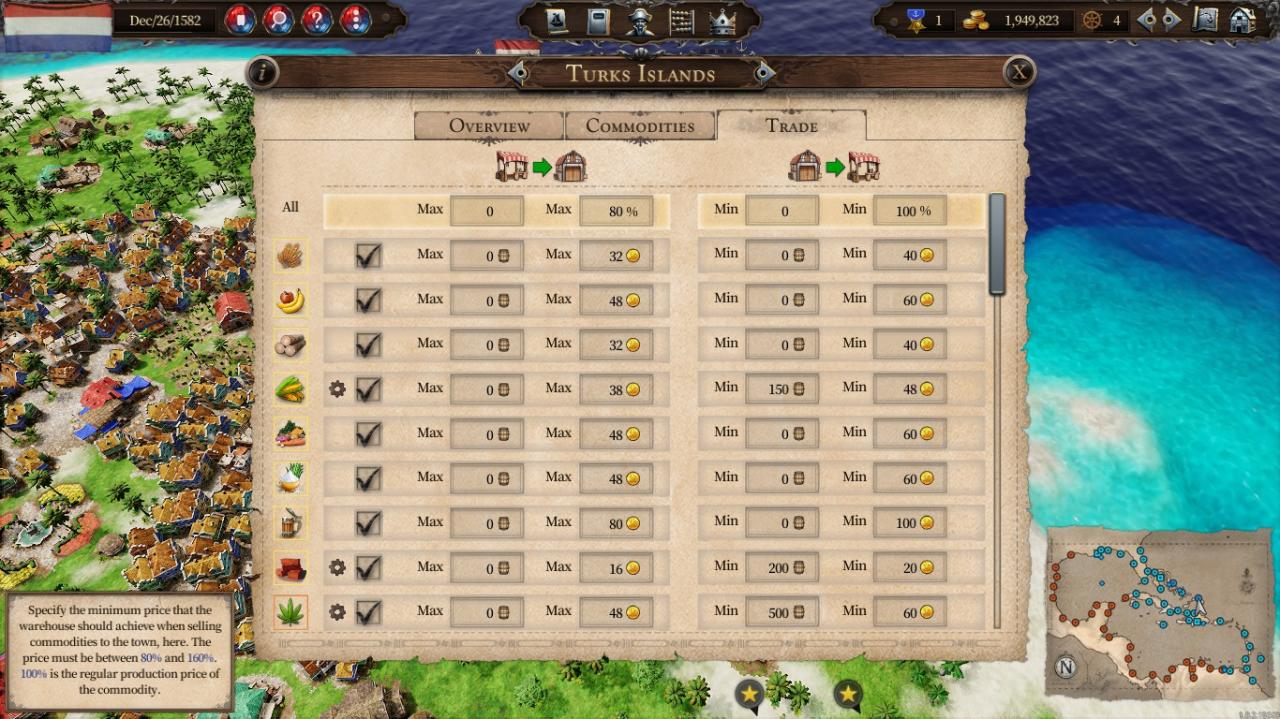
After hiring the Administrator. Note: You cannot fire the Administrator once he is hired
This is the most important part of the warehouse. This is where you can set your warehouse to buy or sell from the town excess commodities. I see many grumblings about not being able to sell items to the town & unload to your warehouse at the same time, or not being able to load from the warehouse and buy anything else that’s cheap from the town. I was one of these grumblers for the first 3 days until I figured out this tab.
Let’s break it down. When you first open the Trade tab you will need to hire an Administrator. He costs the same as the warehouse. Once you hire him, none of the boxes will be checked off. The check box allows the warehouse to trade the commodity. No check in the box, and the commodity will sit there until someone picks it up, or you manually sell it to the town. I check them all off, cause why not. Maybe in a future update we’ll get a “check all” button.
Now the tab is in 2 sections, buying goods from the town on the left, and selling goods to the town on the right. Hard rule for Port Royale 4 is you are not allowed to buy items for less than 80% of their unit cost, and you cannot sell for more than 160% of their unit cost. This is to prevent your warehouse from clearing out the town. You can still manually do this yourself in the city trade window.
Each section has two columns, Stock Level, and Price. In the left section, the Stock Level is how much you want the warehouse to keep in its stock. If the stock falls below this number, it will then attempt to buy from the town until the cost exceeds the price you set in the right column. This is where you can buy from town and load to ships in your trade route setup.
The Right section is the exact opposite. The left column tells the warehouse to sell to the town until the stock falls to that level, as long as the sale price is above your desired price. This is great for selling off excess production. Another utilization is to build a warehouse in your viceroy capital and set this up to sell to the city. That way you can maximize your fame points without selling at a loss. (Also note, you do not gain extra fame for selling above the requested amount of colonial commodities requested).
Last part is the very top row. This is to set all stock levels and all prices (as a percentage of the unit cost) at one time. As you can see, I use the stock level on a per item basis, but I set all of them to sell at 100% of the unit cost since my chains are setup where I’m getting 10-15% bonuses. (Another note, Houses are supposed to give a 10% bonus to handicraft businesses. This is currently bugged and only gives a 5% bonus to production. So a brewery next to a wheat farm and within 2 tiles of a populated residence should get 115% efficiency. Currently it will only get 10%
Warehouse Strategies & Tips
- I advise playing on the ‘Optional’ setting for a bit before moving to the ‘Mandatory’ setting, at least until you get the hang of warehouses and utilizing them in your trade routes and production chains
- You most likely will not need a larger warehouse than T1 for a long time. In my examples up there, I have a T2 warehouse, but I only use 3700 barrels of space. A T1 could easily take care of that. Keep an eye on your 30 day averages and if you’re maxed or close, then consider up
- You should probably hire the administrator. Without the administrator, your businesses will only sell to the town once the warehouse is full. That’s a lot of product sitting in your warehouse losing you money. The administrator will be worth his pay. Remember, you probably don’t need anything more than a T1 warehouse for a long time. Can you get away without him? Yes, but if you’re going that route you probably have production chains being set up and know what you’re doing.
- One of the suggested uses of warehouses, right from the game’s tips & tricks, is to utilize them in a Star distribution. That just means you have a central warehouse that you dump lots of stuff too, and then start your major trade routes from there by picking up commodities to sell. This is a later game idea when you have lots of production chains set up, and is great for regional distribution. In my Netherlands game, sugar only grows in the Antilles or the Mexican/Texan border, meat only comes from South America or Texas, etc. You would ideally have one hub that supplies your routes to everywhere else. You could probably have 2 or 3 hubs, because even on regional distribution you can get everything you need either in 2 adjacent regions. Regions overlap a bit too, so this is by no means cut and dry:
- Gulf of Mexico
- East coast Florida, Bahamas and Turks
- Cuba, Central America, Jamaica, Haiti
- Dominican Republic, Antilles, South America to Nicaragua
That’s all we are sharing today in Port Royale 4 Warehouse Guide, if there are anything you want to add please feel free to leave a comment below and we’ll see you soon.
Credit to Rabid Puma
Related Posts:
- Port Royale 4 Soup to Nuts: The Economy Guide
- Port Royale 4 Manual Trade Routes – Price Guide
- Port Royale 4 French Campaign Treasure Location
